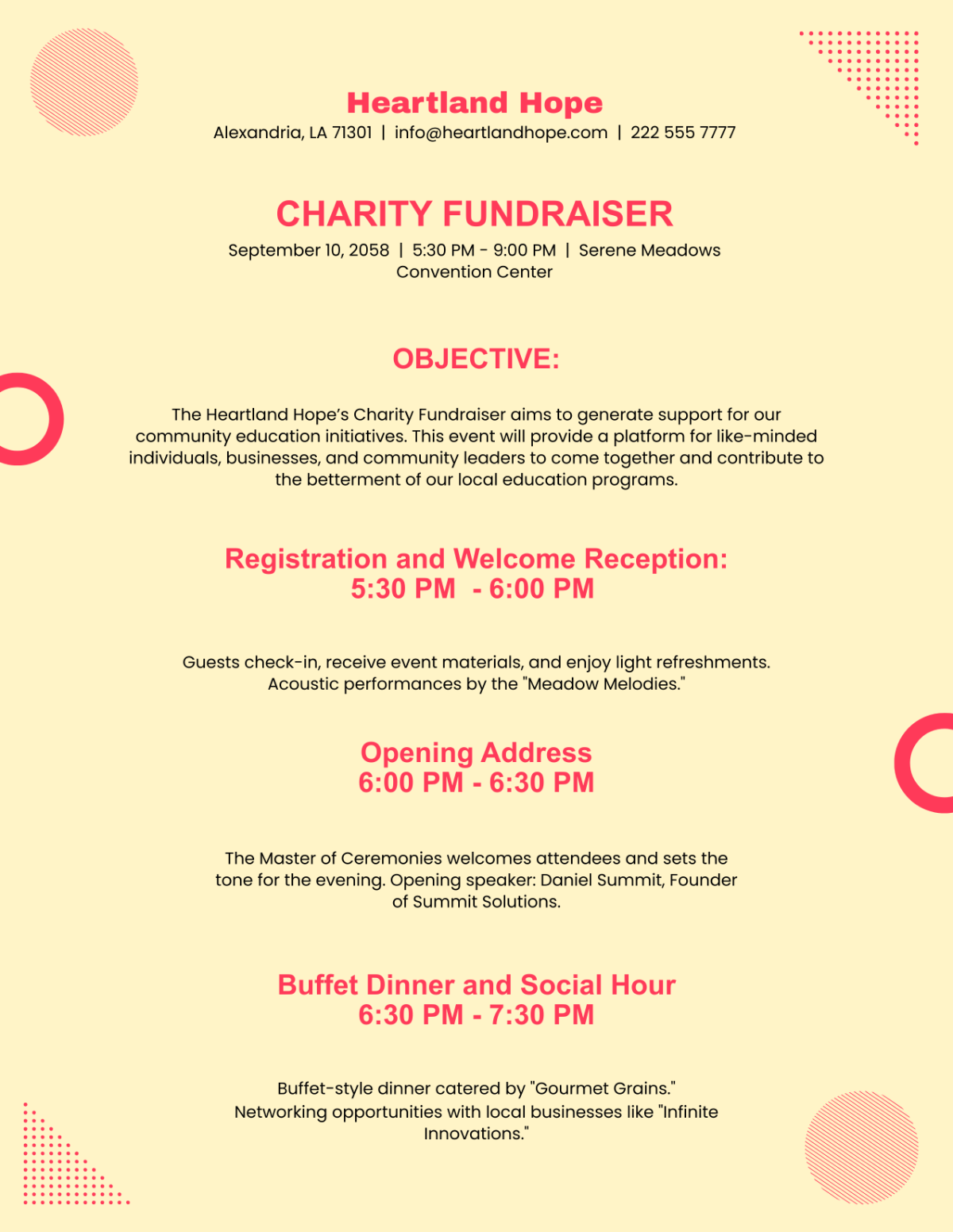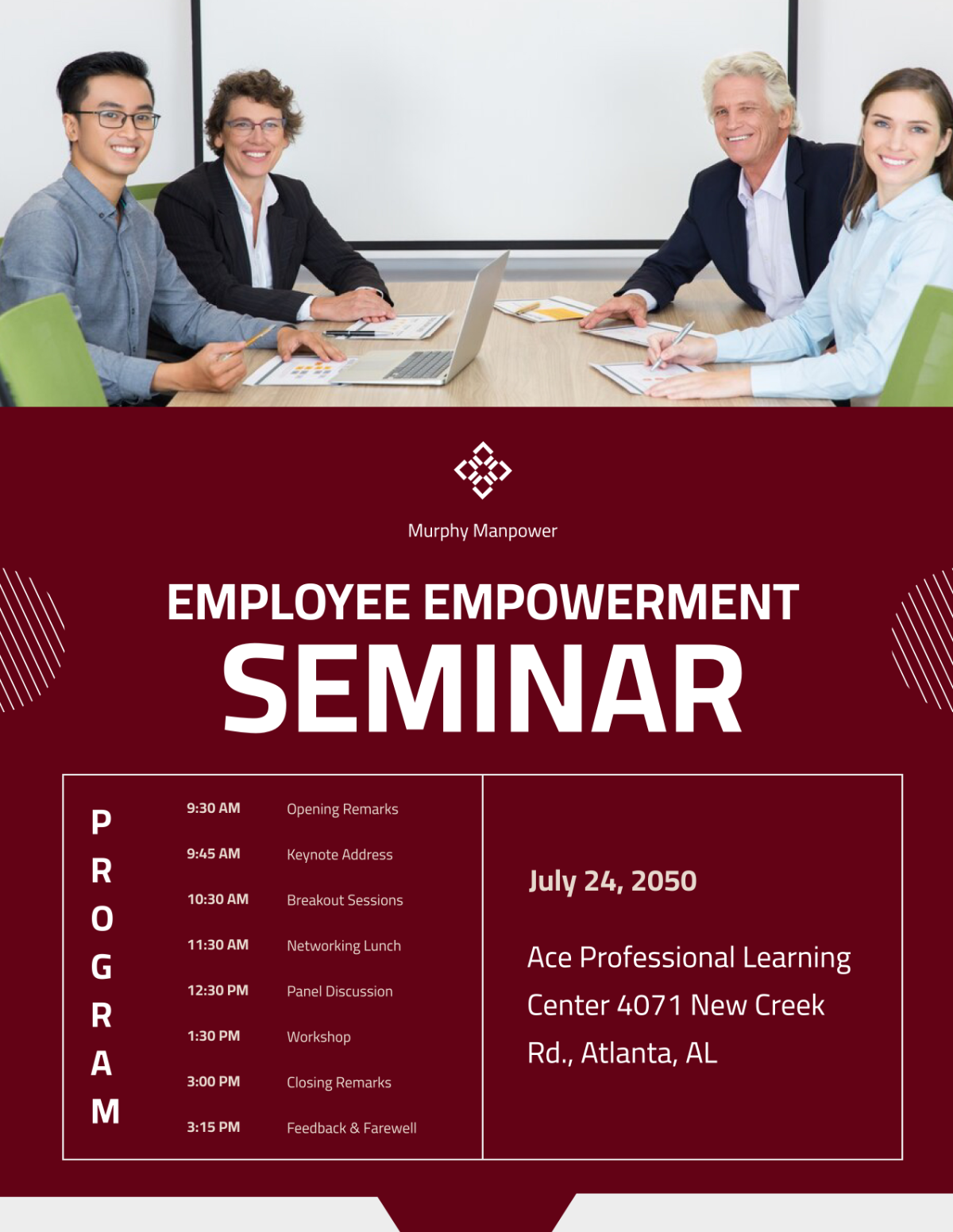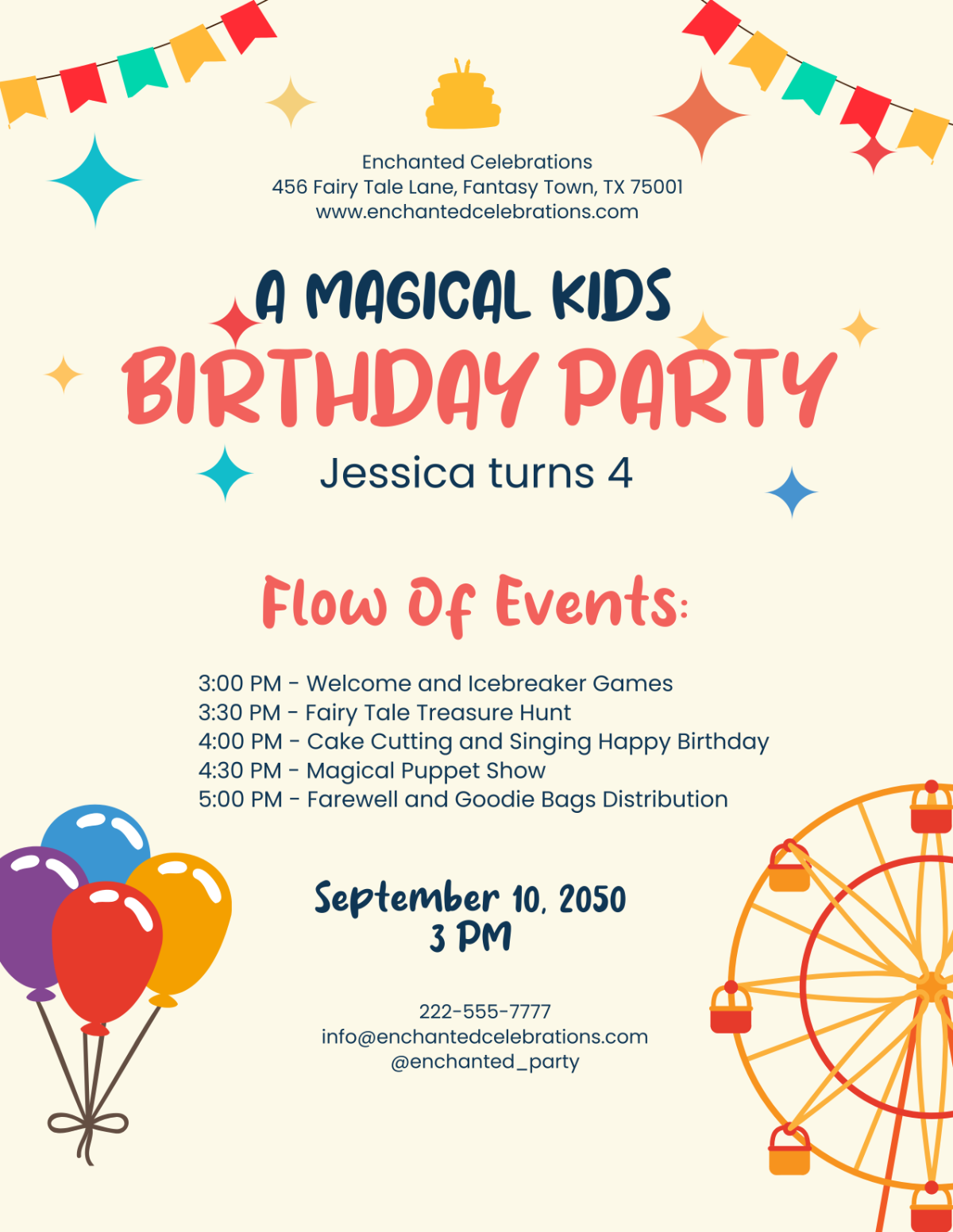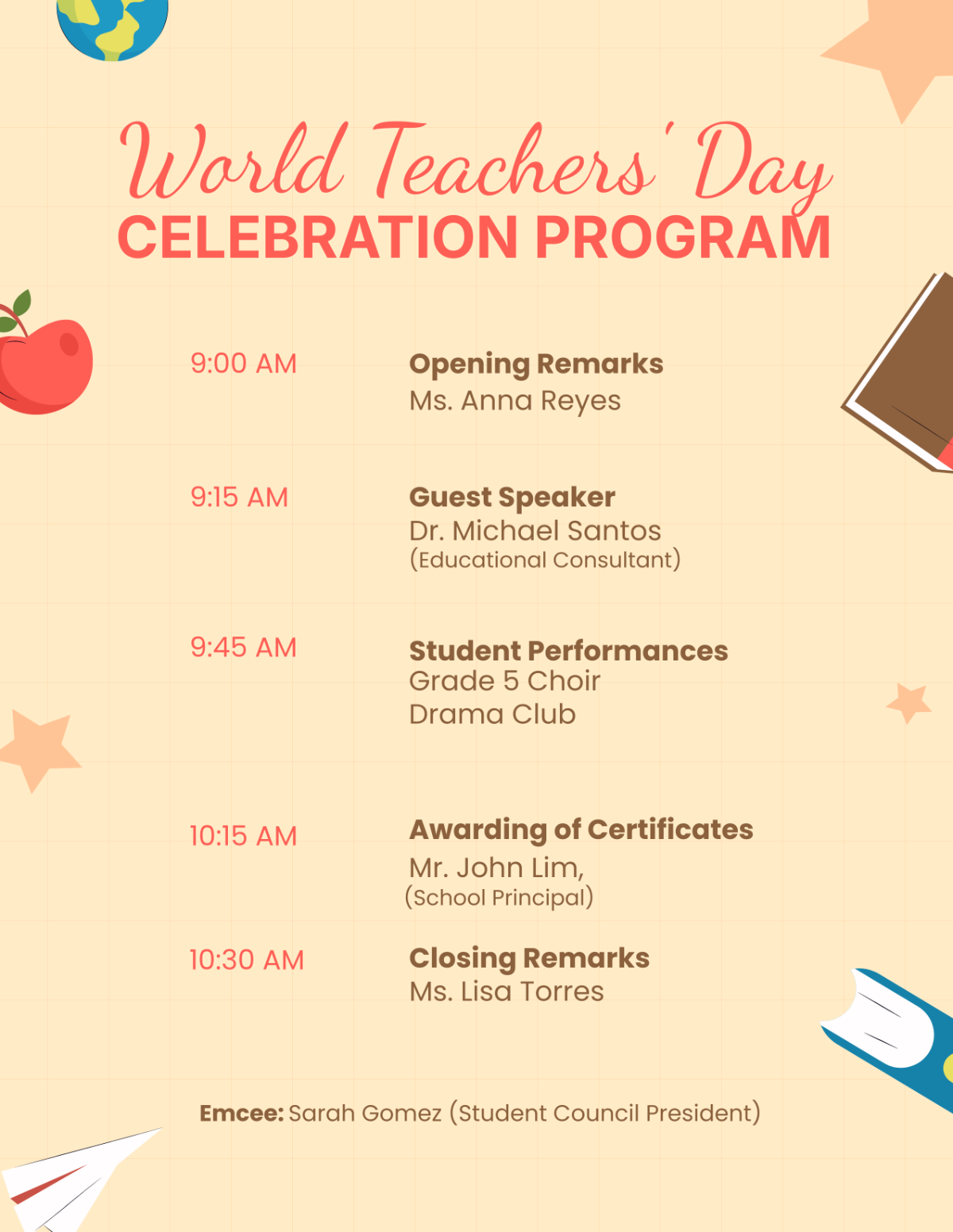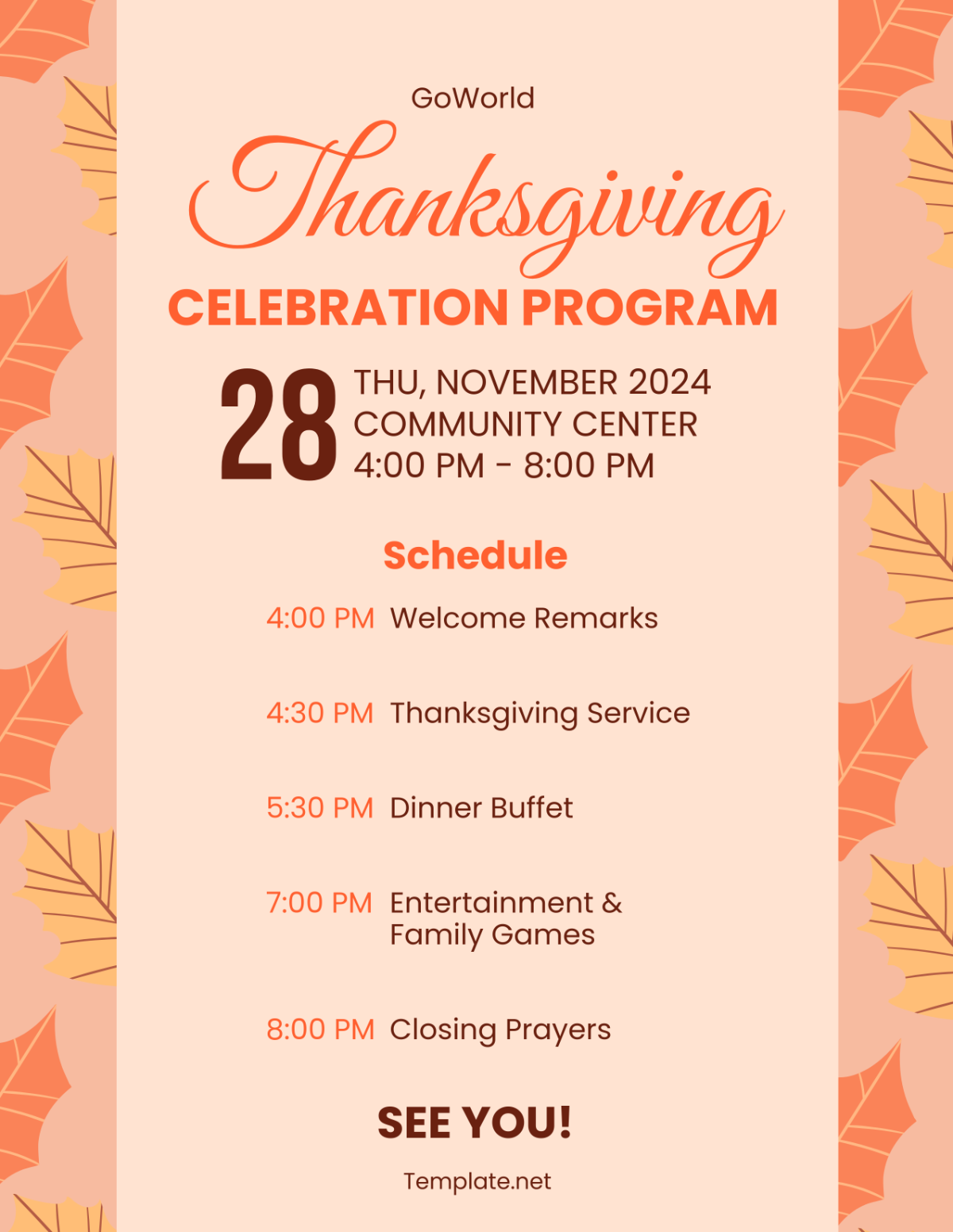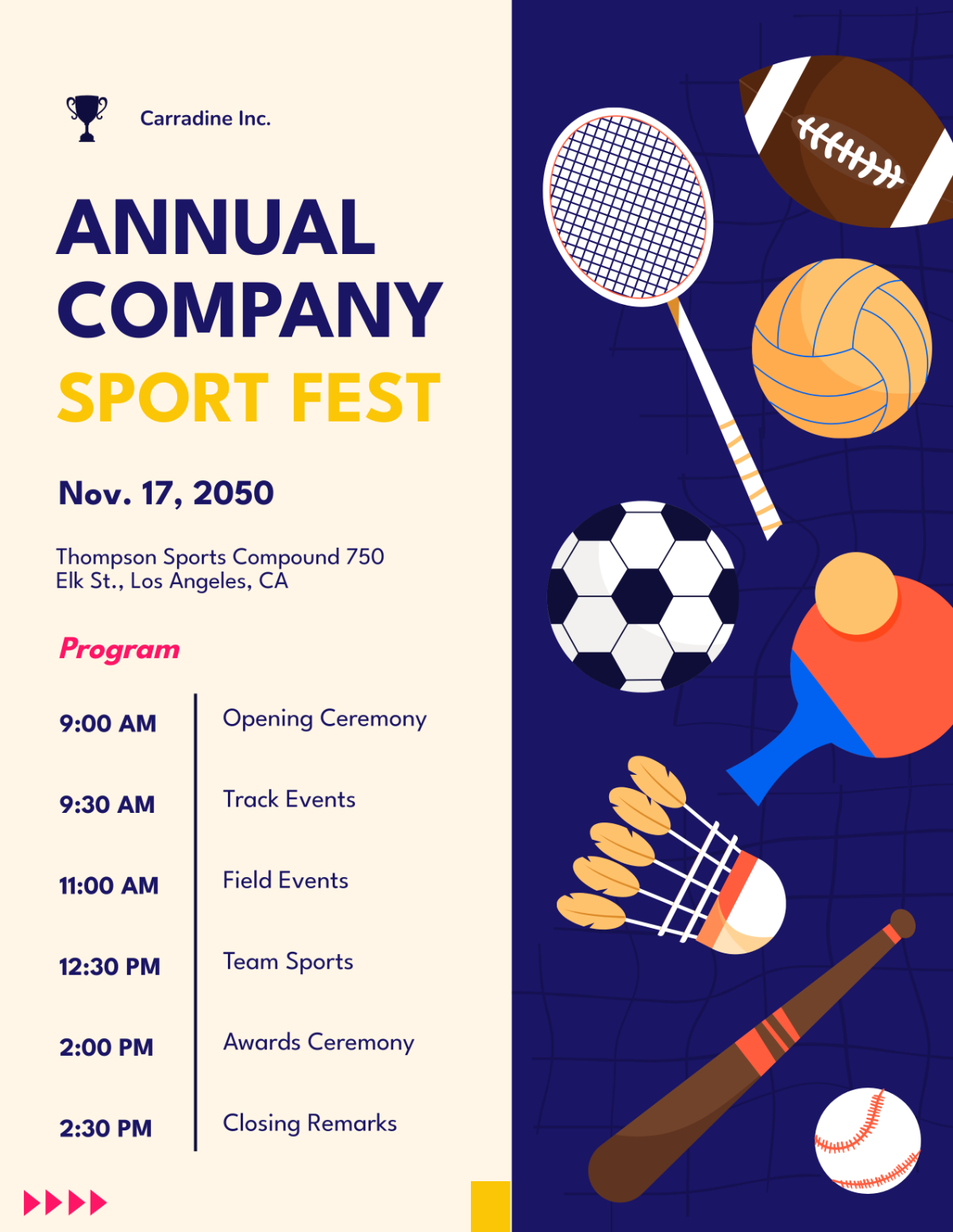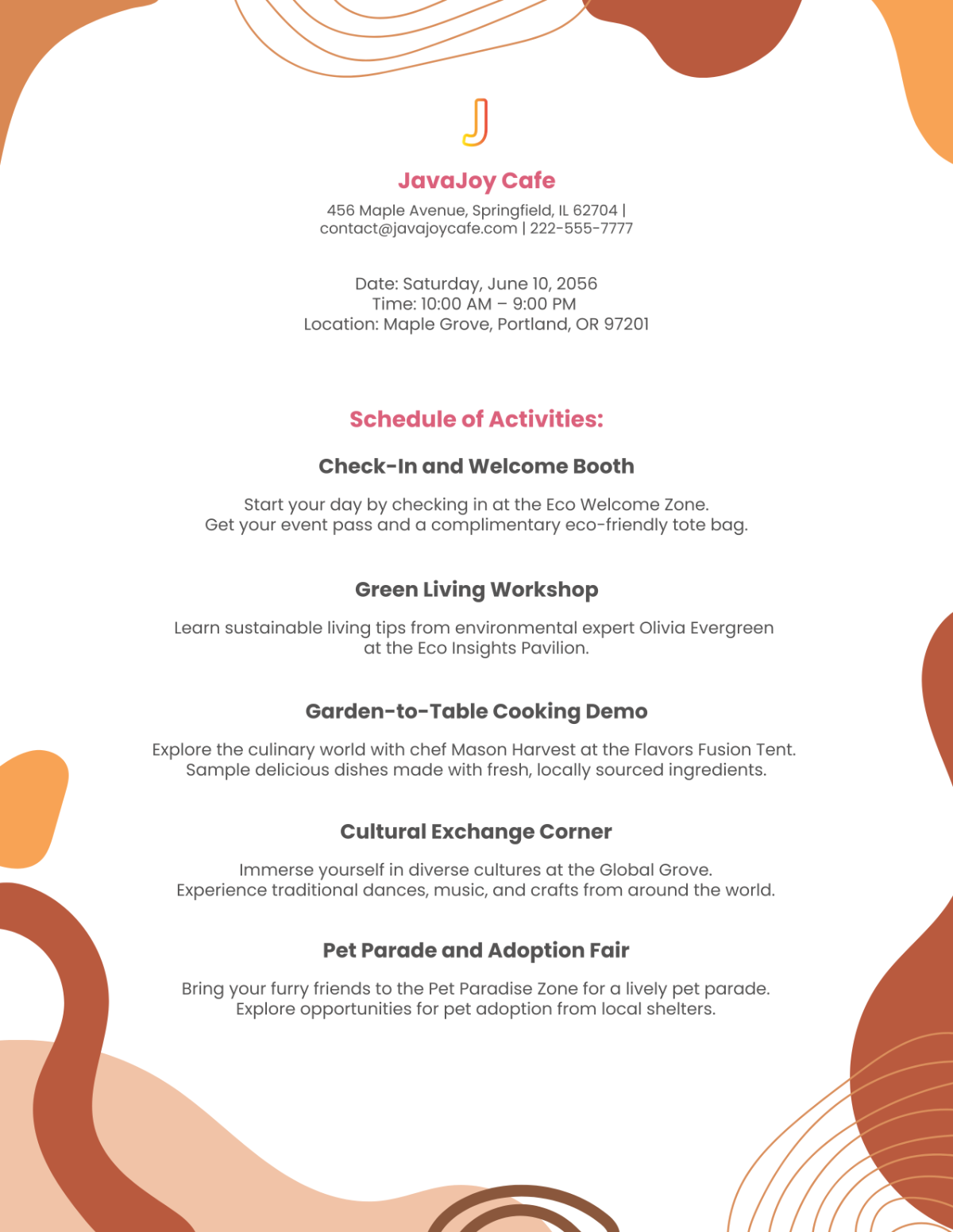Free Nursing Home Falls Prevention Program
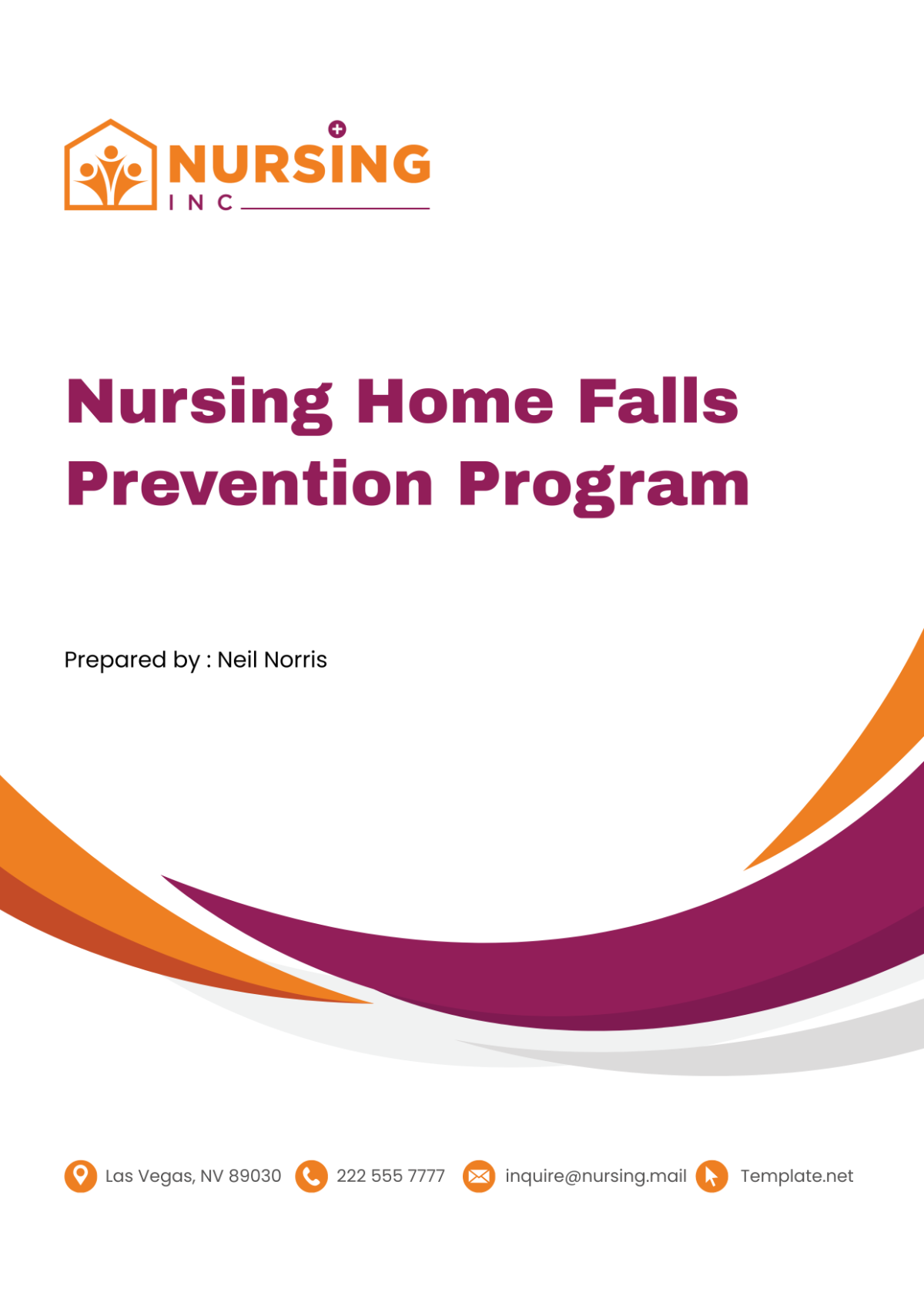
- 100% Customizable, free editor
- Access 1 Million+ Templates, photo’s & graphics
- Download or share as a template
- Click and replace photos, graphics, text, backgrounds
- Resize, crop, AI write & more
- Access advanced editor
Prevent falls among residents with the Nursing Home Falls Prevention Program Template from Template.net! This is a customizable approach to identifying and addressing fall risks within the nursing home. Make use of editable fields and the AI Editor Tool to develop a tailored falls prevention program that promotes safety efficiently!
You may also like
Nursing Home Falls Prevention Program
I. Introduction
A. Purpose of the Program
The purpose of the Falls Prevention Program is threefold:
Improve Safety: The primary goal of the program is to enhance the safety of our residents by reducing the number and severity of falls within our facility.
Promote Quality of Life: By preventing falls, we can help our residents maintain their independence and quality of life. Falls can lead to serious injuries and a loss of confidence, both of which can negatively impact a resident’s ability to enjoy their daily activities.
Comply with Standards: The program is designed to ensure that our facility meets or exceeds all relevant health and safety standards related to fall prevention. This includes both governmental regulations and industry best practices.
Educate Staff and Residents: It aims to educate both staff and residents about the risks associated with falls and the steps that can be taken to mitigate these risks.
Continuous Improvement: The program is not static but is continuously improved based on feedback and the results of ongoing monitoring and evaluation.
B. Scope of the Program
The program applies to all aspects of our facility’s operations:
All Residents: The program covers all residents of our facility, regardless of their current health status or mobility level. We recognize that all residents have the potential to fall and that prevention measures should be in place for everyone.
All Staff: All staff members, regardless of their role, have a part to play in preventing falls. This includes not only our nursing and care staff, but also our administrative, maintenance, and other support staff.
All Areas of the Facility: The program applies to all areas of our facility, including resident rooms, common areas, outdoor spaces, and even off-site locations when residents are participating in outings or other activities.
C. Timeline of the Program
The timeline of the program is a crucial component as it provides a clear schedule for the program implementation. The following table outlines the key milestones and their respective timelines:
Milestone | Timeline |
|---|---|
Program Launch | Month 1 |
Staff Training | Month 1-2 |
Risk Assessments | Month 2-3 |
Intervention Implementation | Month 3-6 |
First Evaluation | Month 6 |
Continuous Improvement | Month 7 onwards |
Program Launch: The program will officially launch in the first month. This will involve communicating the purpose and scope of the program to all staff and residents, and beginning the process of staff training.
Staff Training: Staff training is a critical component of the program and will begin immediately after the program launch. This will involve both general training for all staff and more specific training for those directly involved in resident care.
Risk Assessments: Risk assessments will begin in the second month and continue into the third month. These assessments will identify residents who are at high risk of falls and inform the development of individualized care plans.
Intervention Implementation: Based on the results of the risk assessments, interventions will be implemented starting in the third month and continue through to the sixth month. These interventions will be tailored to the needs of each high-risk resident and will involve a combination of individualized care plans, staff training, and environmental modifications.
First Evaluation: The first evaluation of the program will take place at the end of the sixth month. This will involve tracking falls and injuries, evaluating the effectiveness of interventions, and identifying areas for improvement.
Continuous Improvement: Starting from the seventh month, the program will enter a phase of continuous improvement. This will involve ongoing monitoring and evaluation, updating policies and procedures based on the results of the evaluation, and providing ongoing staff training.
This timeline provides a structured approach to implementing the program. By breaking down the program into key milestones and assigning a specific timeline to each one, we can ensure that the program is implemented in a systematic and efficient manner. This not only helps to ensure that all aspects of the program are properly addressed, but also allows for the tracking of progress and the identification of any issues or delays that may arise.
Furthermore, it serves as a communication tool, keeping all staff and stakeholders informed and engaged in the process. By following this timeline, we can ensure the successful implementation of our Falls Prevention Program and make a significant impact on the safety and well-being of our residents.
II. Risk Assessment
A. Identifying High-Risk Residents
The process of identifying high-risk residents is crucial in preventing falls. This involves:
Health Status Review: A comprehensive review of the resident’s health status is conducted. This includes:
1.1. Chronic Conditions: Evaluating any chronic conditions that may increase their risk of falling. For example, conditions like arthritis or diabetes can affect a resident’s mobility and balance.
1.2. Medication Review: Reviewing the medications that the resident is currently taking. Certain medications, such as sedatives or antihypertensives, can increase fall risk by causing dizziness or instability.
1.3. Hospitalization History: Considering recent hospitalizations that might have affected the resident’s overall health and stability. A recent hospital stay can leave a resident weaker or more unstable than usual, increasing their fall risk.
Mobility Assessment: An assessment of the resident’s mobility is performed. This involves:
2.1. Walking Ability: Observing the resident’s ability to walk independently. Difficulty walking can be a sign of increased fall risk.
2.2. Mobility Aid Use: Assessing the resident’s use of mobility aids, such as walkers or wheelchairs. Proper use of these aids can reduce fall risk, but improper use can actually increase it.
2.3. Daily Activities: Evaluating the resident’s ability to perform daily activities. Struggles with activities like dressing, bathing, or getting in and out of bed can indicate an increased risk of falls.
Previous Fall History: A review of the resident’s history of falls is conducted. This is important because:
3.1. Fall Recurrence: Previous falls are a strong predictor of future falls. A resident who has fallen once is likely to fall again.
3.2. Circumstances of Falls: Understanding the circumstances of previous falls can help in developing targeted prevention strategies. For example, if a resident often falls at night, it may be helpful to increase supervision during this time.
Cognitive Assessment: An evaluation of the resident’s cognitive status is performed. This is crucial as:
4.1. Cognitive Impairment: Cognitive impairment can increase the risk of falls. Residents with conditions like dementia or delirium may be more prone to falls due to confusion or disorientation.
4.2. Behavioral Factors: Residents with cognitive impairments may also exhibit behaviors that increase fall risk, such as wandering or restlessness.
Sensory Assessment: An assessment of the resident’s sensory abilities is conducted. This includes:
5.1. Vision Evaluation: Evaluating the resident’s vision, as poor vision can affect balance and coordination. Regular eye exams can ensure that the resident’s vision is as good as possible.
5.2. Hearing Assessment: Assessing the resident’s hearing, as hearing loss can lead to instability and increased fall risk. Regular hearing checks can ensure that any hearing loss is identified and managed appropriately.
B. Conducting Risk Assessments
Risk assessments are a key component of our falls prevention program. They involve:
Standardized Assessment Tools: The use of standardized tools to assess a resident’s risk of falling is crucial. These tools take into account a variety of factors, including the resident’s health status, mobility, and environment. They include:
1.1. Fall Risk Assessment Tools: Tools such as the Morse Fall Scale or the STRATIFY tool can be used to quantify a resident’s risk of falling.
1.2. Functional Assessment Tools: Tools such as the Barthel Index or the Functional Independence Measure can be used to assess a resident’s ability to perform daily activities independently.
Multidisciplinary Approach: The involvement of a multidisciplinary team in conducting risk assessments is essential. This team includes:
2.1. Nurses: Nurses play a key role in conducting risk assessments, as they have the most direct contact with residents.
2.2. Physiotherapists: Physiotherapists can assess a resident’s mobility and balance, and recommend exercises to improve these.
2.3. Occupational Therapists: Occupational therapists can assess a resident’s ability to perform daily activities and recommend modifications to their environment to reduce fall risk.
Regular Reviews: Regular reviews of the resident’s risk status are important, as their risk of falling may change over time due to changes in their health status, medication, or environment. These reviews involve:
3.1. Scheduled Reviews: Regularly scheduled reviews can ensure that changes in a resident’s risk status are detected promptly.
3.2. Event-Triggered Reviews: Reviews should also be conducted following certain events, such as a fall, a change in medication, or a decline in the resident’s health status.
Individualized Risk Management Plans: The development of individualized risk management plans based on the results of the risk assessment is a key step in preventing falls. These plans outline the specific interventions that will be implemented to reduce the resident’s risk of falling. They include:
4.1. Personalized Interventions: The interventions included in the plan should be tailored to the specific needs and circumstances of the resident.
4.2. Involvement of the Resident and Their Family: The resident and their family should be involved in the development of the plan to ensure that it is acceptable to them and that they understand the measures being taken to prevent falls.
III. Intervention Strategies
Intervention strategies are the core of our falls prevention program. They are designed to address the specific risks identified in the risk assessment process and reduce the likelihood of falls occurring. This involves:
A. Individualized Care Plans
Personalized Interventions: Each resident’s care plan includes interventions that are tailored to their specific needs and circumstances. These interventions are based on the results of the risk assessment and could include physical therapy exercises to improve strength and balance, medication adjustments to reduce side effects like dizziness, or changes to their daily routine to ensure they are not rushing or skipping important steps that could lead to a fall.
Resident Involvement: Residents are actively involved in the development of their care plan. This ensures that the plan is acceptable to them and that they understand the measures being taken to prevent falls. It also encourages them to take an active role in their own fall prevention.
Regular Updates: Care plans are regularly updated based on changes in the resident’s health status, the results of ongoing risk assessments, and feedback from the resident and their family. This ensures that the care plan remains relevant and effective in preventing falls.
Multidisciplinary Approach: The development of care plans involves a multidisciplinary team, including nurses, physiotherapists, occupational therapists, and other healthcare professionals. This ensures that all aspects of the resident’s health and wellbeing are considered in the care plan.
Family Involvement: The resident’s family is also involved in the development of the care plan. They can provide additional insights into the resident’s habits and preferences, and can support the implementation of the care plan at home.
B. Staff Training and Education
Fall Prevention Training: All staff receive comprehensive training on fall prevention strategies. This includes practical training on how to conduct risk assessments, how to implement interventions, and how to respond if a fall occurs. It also includes theoretical training on the causes and consequences of falls, and the importance of fall prevention.
Ongoing Education: Staff receive ongoing education to ensure that they are up-to-date with the latest research and best practices in fall prevention. This could include regular workshops, online courses, or attendance at relevant conferences or seminars.
Role-Specific Training: Training is tailored to the specific roles and responsibilities of each staff member. For example, nurses receive training on medication management and how certain medications can increase fall risk, while physiotherapists receive training on how to design and implement effective exercise programs for fall prevention.
Training Evaluation: The effectiveness of staff training is regularly evaluated to ensure that it is improving staff knowledge and skills, and reducing the incidence of falls. This could involve quizzes, practical assessments, or feedback from residents.
C. Environmental Modifications
Safety Audits: Regular safety audits are conducted to identify potential fall hazards in the resident’s environment. These audits involve a thorough inspection of all areas of the facility, including resident rooms, common areas, and outdoor spaces.
Hazard Remediation: Any hazards identified during the safety audit are promptly remediated. This could involve improving lighting, clearing walkways, installing non-slip flooring, or adjusting furniture layouts to reduce trip hazards.
Adaptive Equipment: Adaptive equipment, such as grab bars or raised toilet seats, is installed as needed to help residents move safely in their environment. The need for such equipment is determined based on the resident’s mobility assessment and individualized care plan.
Resident Education: Residents are educated about the environmental modifications and how to use them safely. This helps to ensure that the modifications are effective in preventing falls.
Ongoing Monitoring: The effectiveness of environmental modifications is regularly monitored and adjustments are made as needed. This could involve additional safety audits, feedback from residents and staff, or consultation with an occupational therapist.
IV. Monitoring and Evaluation
Monitoring and evaluation are critical components of our falls prevention program. They allow us to track the incidence of falls and injuries, evaluate the effectiveness of our interventions, and make necessary adjustments to improve the program. This involves:
A. Tracking Falls and Injuries
Incident Reporting: All falls and injuries are promptly reported and recorded in a standardized incident report. This includes:
1.1. Immediate Reporting: Staff are trained to report any falls immediately, ensuring that all relevant details are accurately captured.
1.2. Standardized Forms: We use standardized incident report forms to ensure consistency in the information collected across all incidents.
Injury Assessment: When a fall occurs, a thorough assessment of the resident’s injuries is conducted. This includes:
2.1. Physical Injuries: A healthcare professional assesses the resident for any physical injuries, such as fractures or bruises. This helps in providing appropriate medical care and in understanding the severity of the fall.
2.2. Psychological Impact: The resident’s emotional state is also assessed following a fall. Falls can often lead to fear or anxiety, which can in turn increase the risk of future falls.
Fall Circumstances: The circumstances of each fall are also recorded. This includes:
3.1. Location and Time: The location and time of the fall are recorded to help identify any patterns or high-risk areas or times.
3.2. Activity During Fall: The activity the resident was engaged in when they fell is noted. This can provide insights into potential risk factors and guide intervention strategies.
Data Analysis: The data collected through incident reporting and injury assessment is regularly analyzed. This involves:
4.1. Trend Identification: By analyzing the data, we can identify trends or patterns in falls, such as common locations, times, or activities associated with falls.
4.2. Intervention Adjustment: The results of the data analysis are used to adjust our intervention strategies, ensuring they are effectively targeting the identified risk factors.
B. Evaluating Intervention Effectiveness
Outcome Measures: We use a variety of outcome measures to evaluate the effectiveness of our interventions. These include:
1.1. Number of Falls: Tracking the number of falls over time allows us to measure the direct impact of our interventions on fall rates.
1.2. Severity of Injuries: By monitoring the severity of injuries resulting from falls, we can assess whether our interventions are reducing not just the number of falls, but also the harm caused by falls.
1.3. Resident’s Fear of Falling: Fear of falling can significantly impact a resident’s quality of life and can even lead to further falls. By measuring changes in residents’ fear of falling, we can evaluate the psychological impact of our interventions.
Process Measures: We also use process measures to evaluate the implementation of our interventions. These include:
2.1. Staff Training Completion: Tracking the number of staff who have completed fall prevention training helps us ensure that all staff are equipped with the knowledge and skills to prevent falls.
2.2. Risk Assessments Conducted: By counting the number of risk assessments conducted, we can ensure that all residents are being regularly assessed for fall risk.
2.3. Environmental Modifications Made: Keeping track of the environmental modifications made allows us to evaluate the extent to which we are altering the physical environment to reduce fall risks.
Resident Feedback: Feedback from residents is an important part of our evaluation process. We regularly seek their input on:
3.1. Perceived Effectiveness: Residents’ perceptions of the effectiveness of our interventions can provide valuable insights into areas for improvement.
3.2. Satisfaction with the Program: Measuring residents’ satisfaction with the program helps us ensure that our interventions are not only effective, but also acceptable to the residents themselves.
3.3. Suggestions for Improvement: Residents often have unique insights into their own fall risks and how to mitigate them. Their suggestions for improvement can be invaluable in refining our program.
Staff Feedback: Feedback from staff is also crucial. We seek their input on:
4.1. Feasibility of Interventions: Staff feedback can help us understand whether our proposed interventions are feasible and practical to implement.
4.2. Perceived Impact on Resident Safety: Staff perceptions of the impact of our interventions on resident safety can provide another measure of effectiveness.
4.3. Suggestions for Improvement: As the individuals implementing the interventions, staff can provide valuable suggestions for improving the program.
Continuous Improvement: Based on our evaluation, we continuously improve our interventions and strategies to enhance their effectiveness and efficiency. This involves:
5.1. Data-Driven Decision Making: We use the data collected through our outcome and process measures, as well as resident and staff feedback, to inform our decision making.
5.2. Regular Program Reviews: We conduct regular reviews of our program to identify areas for improvement and update our interventions accordingly.
5.3. Ongoing Staff Training: We provide ongoing training to staff to ensure they are up-to-date with the latest fall prevention strategies and techniques.
V. Continuous Improvement
Continuous improvement is a key principle of our falls prevention program. We believe that there is always room for improvement and that the most effective programs are those that adapt and evolve over time. This involves:
A. Program Evaluation
Regular Reviews: We conduct regular reviews of our falls prevention program to ensure that it remains up-to-date and effective. These reviews take into account the latest research and best practices in fall prevention, as well as feedback from staff and residents.
Incorporating Feedback: We actively seek and incorporate feedback from staff, residents, and their families into our program. This ensures that our program is not only effective, but also acceptable and feasible to implement.
Adapting to Changes: Our program is flexible and can be adapted to changes in our resident population, staff, or environment. This ensures that our program remains relevant and effective in the face of change.
Communication of Changes: Any changes to our program are clearly communicated to all staff and residents. This ensures that everyone is aware of the changes and understands their role in implementing them.
B. Ongoing Staff Training
Training on Program Updates: When the program is updated, we provide training to staff to ensure that they understand and can effectively implement the new strategies.
Refresher Courses: We provide regular refresher courses to remind staff of the key components of the falls prevention program and to keep their skills sharp.
New Staff Orientation: New staff members receive thorough training on the falls prevention program as part of their orientation.
Training Evaluation: The effectiveness of staff training is regularly evaluated to ensure that it is improving staff knowledge and skills, and reducing the incidence of falls.

